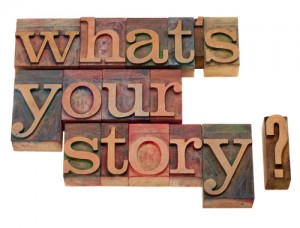 Ira Glass, host of NPR’s “This American Life”, talks about storytelling in terms of building blocks. Stories are built on two important things; anecdotes and reflection. You can think of anecdote as action. What is happening in the story? How is it moving along? What is the order in which things transpire? This is the root of all storytelling. Something happens, then something else, then something else.
Ira Glass, host of NPR’s “This American Life”, talks about storytelling in terms of building blocks. Stories are built on two important things; anecdotes and reflection. You can think of anecdote as action. What is happening in the story? How is it moving along? What is the order in which things transpire? This is the root of all storytelling. Something happens, then something else, then something else.
But the second piece, Glass explains, is what distinguishes a good story from a great one. The second part is reflection. Reflection, as he explains it, is the point where the storyteller tells you why they are telling you the story. It’s the point where you have a realization that you’ve learned something new. That is the brilliance of good storytelling.
I think that one of the biggest mistakes a lot of content marketers make is that they don’t root their content in story. There’s so much pressure on online content producers to put out loads of keyword rich, timely, relevant stuff, that the art of storytelling really gets lost.
Think about your average blog post. Most people take a very formulaic approach to writing blogs these days. They have a catchy title, a pithy introduction, and then a big long list of stuff. Sure, there’s something to be said for brevity and scan-ability, but is there not room for spending a bit more time on creating a good story, too?
Thinking about content in terms of story takes work up front. Before you even start tapping words on the screen, you need to look seriously at why you’re doing what you’re doing. In other words, you need to answer the last question Ira Glass asks first. You need to reflect.
Now, reflection need not be a long and labour intensive process. Really, what it takes is asking yourself a few important questions:
- Why am I telling this story?
- What value am I providing to my audience?
- What new thing are they going to learn by hearing my story?
If you can answer these questions, you’re already on your way to telling a better story, whether it’s a blog post, a podcast, a video, or a book – any kind of content.
Then, once you’ve got a good handle on the reflection piece, you can work backwards from there and figure out the anecdotes, or actions, you’re going to use to move your story along.
Need an example? Read everything Seth Godin writes, and watch his presentations. Each thing he does is an experience, and is rooted in story. You walk away having been entertained but you also learn something new. Anecdote and reflection. Anecdote and reflection.
Does applying good storytelling techniques take more work? Well, at first, it will. After a while it just becomes a habit.
I promise you that your content will be better for it.
Story is one of the things I delve deeply into in my new book, Produce: The Art of Creating Anything Using Professional Production Techniques. It comes out in June, you can read more about it here and subscribe to my mailing list to receive updates.

thanks so much for this article